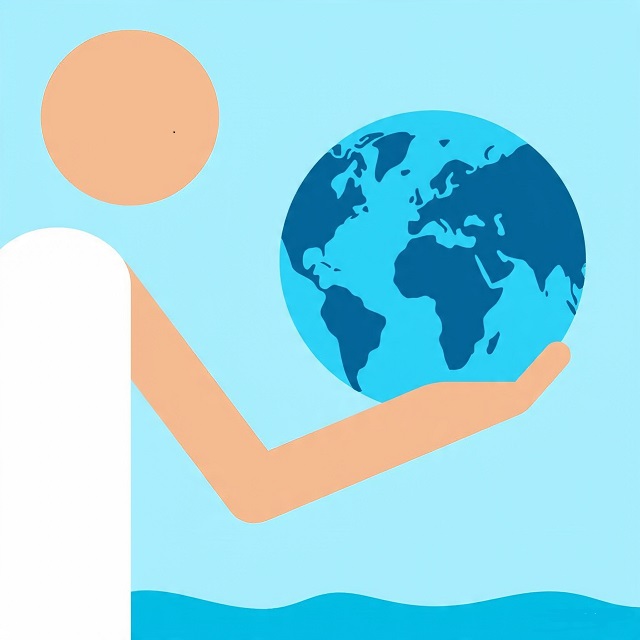What are natural resources? These are materials or substances found in nature that are essential for human survival and economic development. From forests and water to minerals and fossil fuels, understanding what are natural resources helps us manage them wisely and ensure a sustainable future for the planet.
Table of Contents
🌍 Introduction: What Are Natural Resources
Picture waking up to a world without:
☕ Coffee (needs fertile soil and clean water)
📱 Smartphones (made from rare minerals)
💡 Electricity (from sunlight, wind, or fossil fuels)
Natural resources are the unsung heroes behind everything we use, eat, and breathe. But here’s the shocking truth:
🔴 We’re using Earth’s resources 1.7 times faster than they can regenerate.
(Source: Global Footprint Network)
This guide isn’t just about definitions—it’s a wake-up call and action plan to save the resources that keep us alive.

1. What Are Natural Resources? (The Building Blocks of Life)
Nature’s Two Superpowers: Biotic vs. Abiotic
| Biotic (Living) 🌱 | Abiotic (Non-Living) ⛏️ |
|---|---|
| Comes from plants, animals, microbes | Comes from rocks, air, water |
| Examples: Forests, fish, crops | Examples: Gold, oil, sunlight |

Real-World Impact:
- Your morning orange juice → Needs fertile soil (biotic) + water (abiotic).
- Your smartphone → Contains gold (abiotic) + plastic (from oil, which comes from ancient biotic matter).
💡 Mind-Blowing Fact:
The oxygen in one out of every two breaths you take comes from ocean plankton—not trees!
2. Renewable vs. Non-Renewable: The Race Against Time
🔄 Renewable Resources (Earth’s Repeatable Gifts)
“Use me wisely—I can come back!”
| Resource | How It Works | Danger If Misused |
|---|---|---|
| Sunlight ☀️ | Infinite solar energy | None (but solar panels need minerals) |
| Forests 🌳 | Trees regrow | Deforestation = permanent loss (like the Amazon) |
| Freshwater 💧 | Rain refills lakes | Overuse = droughts (e.g., Cape Town’s 2018 “Day Zero”) |
⚠️ Critical Note:
Even renewables can vanish. Example: Atlantic cod fisheries collapsed in the 1990s from overfishing.
⛔ Non-Renewable Resources (One-Time Deals)
“Once I’m gone, I’m gone for millions of years!”
| Resource | What It Powers | Years Left (Est.)* |
|---|---|---|
| Oil 🛢️ | Cars, plastics | ~50 years |
| Coal ⚫ | Electricity | ~150 years |
| Phosphorus 🧪 | Fertilizers (food!) | 50-100 years |
*Sources: BP Statistical Review, USGS
🔥 Fossil Fuel Paradox:
They power our world but cause climate change, air pollution, and wars over supply.

3. Nature’s Free Services (That We Take for Granted)
Beyond raw materials, ecosystems work like silent superheroes providing:
A. The “Invisible” Life-Support Systems
🌬️ Air Purification – Trees absorb CO₂; phytoplankton make oxygen.
💦 Water Filtration – Wetlands clean pollutants naturally (saving billions in treatment costs).
🐝 Food Security – 1 in 3 bites of food relies on pollinators like bees.
B. Cultural & Economic Powerhouses
🏞️ Tourism – Grand Canyon, Great Barrier Reef generate billions yearly.
❤️ Mental Health – Just 20 mins in a park reduces stress (Stanford study).
💡 Did You Know?
New York City saved $8 billion by protecting forests upstate instead of building a water filtration plant.

4. The 5 Deadly Threats to Our Resources
1️⃣ Overconsumption
- Earth Overshoot Day 2024: August 1 (the day we’ve used all resources Earth can renew in a year).
- Shrinking Forests: 10 million hectares lost annually—size of Portugal!
2️⃣ Pollution’s Toxic Legacy
- Plastic Tsunami: By 2050, oceans could contain more plastic than fish (by weight).
- Dirty Air: Kills 7 million people/year (WHO).
3️⃣ Climate Change Chaos
- Melting Glaciers = Less drinking water for 1.9 billion people.
- Coral Reef Collapse – 50% gone since 1950; could vanish by 2100.
4️⃣ Extinction Crisis
- 1 million species face extinction—many before we even discover them!
5️⃣ Inequality in Resource Use
- Richest 10% cause 50% of emissions; poorest 50% cause just 10%.

5. How YOU Can Be a Resource Hero (Simple Actions = Big Impact)
💧 Water Warrior
- Fix a leaky faucet → Saves 3,000 gallons/year.
- Meat-Free Mondays → Beef uses 1,800 gallons water/pound!
⚡ Energy Saver
- Unplug devices → “Vampire energy” wastes $19 billion/year in U.S. alone.
- Switch to LEDs → Uses 75% less energy than bulbs.
🗑️ Waste Fighter
- Recycle 1 aluminum can = Saves enough energy to power a TV for 3 hours.
- Bring a reusable cup → Disposable cups pile up to 25 billion/year in the U.S.
🌱 Nature Protector
- Plant native flowers → Save bees and butterflies.
- Use Ecosia (search engine that plants trees).
📢 Advocate for Change
- Support renewable energy policies.
- Demand corporate accountability (e.g., plastic reduction).
🌿 Conclusion: Write the Future You Want
Natural resources are like a bank account. Right now, we’re withdrawing too much and saving too little. But every positive action is a deposit:
✅ Small choices (reusable bags, shorter showers)
✅ Community efforts (tree planting, cleanups)
✅ Global awareness (voting, sharing knowledge)
The question isn’t “Can we fix this?”—it’s “Will we act in time?”

Start today—share this guide and commit to one change that protects our planet! Your move, Earthling. 🌎✨
🔍 Want to Go Deeper?
- Calculate your ecological footprint: footprintcalculator.org
- Track real-time deforestation: globalforestwatch.org
Enjoyed this topic?
If you’re curious to learn more about science, don’t miss our other exciting blogs:
- What is Gravity?
- What is Electricity?
- What Causes Earthquakes?
- Why is the Sky Blue?
- How Do Plants Grow?
…and many more fascinating science topics!
👉 Explore more science blogs here and keep your curiosity alive!
